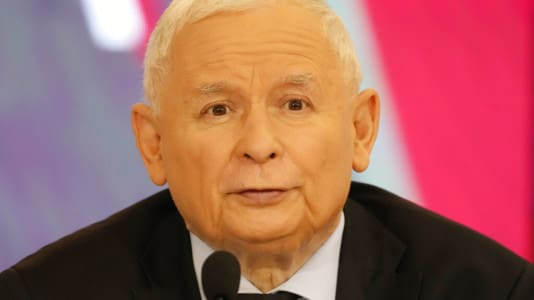The decision is based on an allegedly acute threat to Russian territory from Ukraine and NATO. At the same time, Russia also announced that it will recognize the referendums called by the Donetsk and Luhansk People’s Republics on the vote to join the Russian Federation. It is obvious that the result of this vote will not be left to chance.
Not even supposedly close allies such as Kazakhstan or Belarus recognize the so-called People’s Republics. Minsk takes a more neutral stance on the territories, while Kazakhstan fully recognizes Ukraine’s territorial integrity and refuses to go along with Moscow. Except for North Korea and Syria, the list of allies who will side with Russia at the weekend, and during the upcoming UN meetings, is likely to be short.
The Kremlin obviously does not care about its international reputation. The planned and now enforced union with the federation apparently aims at something else. It would allow Moscow to use conscripts to defend the “national territory” – which, according to the Kremlin, would then be the People’s Republics. The previous covert deployment of conscripts in Ukraine has caused outrage and upheaval on the domestic front. Since, according to Moscow, its action in Ukraine is not a war but a “special operation,” it must theoretically do without conscripted soldiers.
Mobilization will have no immediate effect
With the incorporation of Luhansk and Donetsk, Putin can entrust their defense to soldiers who, officially at least, were not previously available to him. What some observers see as a stage of escalating Russian dominance is interpreted by Ukraine and Western military forces as weakness. According to their interpretation, Russia cannot protect its occupied territory in Ukraine by mass mobilizing poorly trained and unmotivated conscripts. The Kremlin is indirectly admitting that the Ukrainian counteroffensive and its success in the east and northeast are so substantial that the very existence of the separatist governments is threatened. By officially annexing these areas, Russia can now not just send tens of thousands of conscripts there to defend what it claims to be Russian territory, but theoretically also use tactical nuclear weapons.
For military commentators and veterans like Igor Girkin a.k.a. “Strelkov,” the mobilization comes much too late. As early as March, after the first setbacks in Kyiv, he had called for total mobilization to have a realistic chance of winning the war, especially since the process will take months to impact the battlefield. The called-up reservists must receive at least refresher training. Meanwhile, Russian logistics can hardly keep up with supplying its forces deployed in the Donbas and southern Ukraine.
It will take some time before drafted reservists are adequately equipped and trained to be effective in their respective units. The material reserves are likely available for this. Russian forces are suffering heavy equipment losses in Ukraine, but they are still proving, week after week, that the material reserves are large enough to replace these losses. Nevertheless, it will take time before Russia can repair the many military vehicles it needs for deployment, some of which have been stored outside for decades.
The approaching “rasputitsa” (mud season), in addition to the coming onset of winter, will ensure that the fighting in Ukraine will not freeze fully, but will at least lose mobility. That gives Moscow time to adapt its logistics to potentially deploying hundreds of thousands of conscripts.
Russia relies on patriotic propaganda
How high the fighting power of these troops will be, can be seen from past wars in Russia in Georgia or Chechnya. In Ukraine itself, where many young conscripts were already being used against their will, the combat effectiveness of the forced soldiers was rather low. Russian rhetoric tries to sell the war in Ukraine as a “great patriotic military operation.” Victory must be won, otherwise, the West will destroy Russia.
The fact that this narrative does not resonate with at least some potential conscripts is shown by the drastic increase in Russian-language searches for “How can I leave Russia?” on Google in the past few days. It remains questionable whether the personnel problems of the Russians, who, like the Western Europeans, are in a bad demographic situation, can be solved by partial mobilization. The American war in Vietnam and the Soviet debacle in Afghanistan have shown that the deployment of conscripts on the home front causes great resentment and can have enormous domestic political consequences — up to and including the collapse of entire world empires.
This is especially true in light of Russian military experts like Girkin who have long noted that the mobilization does not make up for the technological disadvantage of the Russian armed forces, which has arisen through Ukraine using HIMARS and other systems from the West. Nevertheless, partial mobilization has the potential to shift the balance of power back towards Moscow on some front sections in eastern Ukraine.
Ukraine and the West will respond to it
Ukraine’s relative composure to the Russian mobilization may also have something to do with the fact that presidential advisers like Oleksiy Arestovych and others had long anticipated this. According to government circles, Kyiv is ready. The Ukrainian leadership mobilized on the first day of the war and is tirelessly training its reserves with Western weapons, the flow of which is unlikely to run dry. Washington had already signaled in advance that the illegal annexation of the so-called People’s Republics would have “consequences.” Washington, for its part, will respond to Moscow’s move and ramp up arms supplies, both qualitatively and quantitatively.
Ukraine will probably try to keep up the pressure on over the winter and not lose the initiative it has gained, while new reserves and newly drafted units get equipped with Western material. In the spring, it may then become clear whether the Russian mobilization has had the desired effect.






